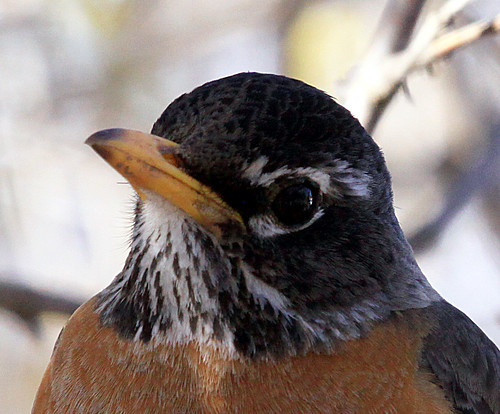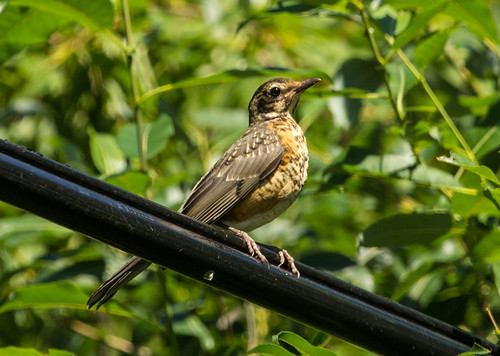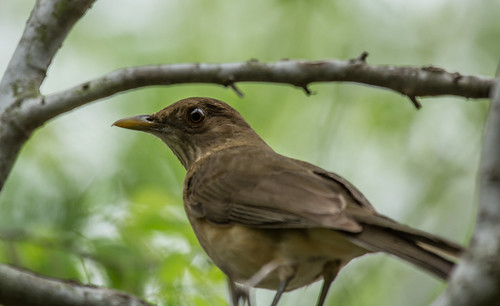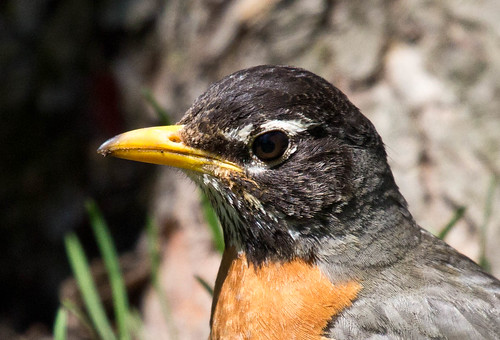2015 has been an exceptional year. This spring, I had more
Pine Siskins in my yard than I’ve had in years—often more than a hundred at a
time gathering in my feeders and trees well into June. I had lots of warblers
throughout May, including both a Connecticut and a real rarity up here, a
Blue-winged Warbler. Both in my yard and beyond, I saw more Canada Warblers
than I’ve ever seen before in an entire year.
To offset all this abundance, I don’t think I’ve ever seen
as few White-throated Sparrows in my yard, throughout the entire month of May.
That was distressing, but I don’t know if it was a mere blip on their normal
migration patterns and their numbers are normal on their breeding territories,
or if it represents an actual decline.
That’s the trick with all migration
numbers—we never know if we’re seeing a sudden decline or population surge, or
if we’re merely witnessing the result of odd weather patterns pushing the birds
east or west of their normal routes. Even a year or two of high or low breeding
numbers in an area can be an artifact of odd weather patterns pushing migrants
in or out of an area for a season, or affecting song patterns so more or fewer
are detected than normal. That is why we need annual surveys using the exact
same protocol from one year to the next, so that over the long haul, measured
in decades rather than years, we can see patterns.
Since the 1960s, American Robins have been doing quite well across
the entire continent, and statewide in both Wisconsin and Minnesota, according
to Breeding Bird Survey numbers.
| Robin numbers based on Breeding Bird Survey--across entire continent |
|
|
But the number in my own neighborhood dropped
dramatically after the 1980s—corresponding pretty much directly to both the
increase in nesting crows and Merlins in the neighborhood and to the increased
use of lawn pesticides. That is excellent evidence that what any of us observe locally may be quite different from the overall trend for a species.
I used to have three or four different pairs nesting in my yard and adjacent yards, the territorial males all piping in every morning between 4 and 5 am, and occasionally the male nesting in my own yard singing all night long. They’d get into all kinds of squabbles over my birdbath, too. They’d be on my radar from the day they arrived in April through mid-July when the males stopped singing, and even then I’d often see adults or young birds hanging out.
I used to have three or four different pairs nesting in my yard and adjacent yards, the territorial males all piping in every morning between 4 and 5 am, and occasionally the male nesting in my own yard singing all night long. They’d get into all kinds of squabbles over my birdbath, too. They’d be on my radar from the day they arrived in April through mid-July when the males stopped singing, and even then I’d often see adults or young birds hanging out.
By the mid-90s, though, their density on Peabody Street had decreased dramatically. We still always had a pair nesting in my yard or one of the adjacent yards, but without so many neighbors, the male didn’t spend so much time singing. We still usually had a burst of song before dawn, but it never lasted very long, and we couldn’t hear answering songs from our yard. And our bird never ever sang the night through—at least not when our windows were open.
But this year, for the first time I can remember since the 80s, we have at least 3 and possibly 4 pairs close again—I can hear them with or without my hearing aids, so it’s not due to the sudden improvement in my hearing. I'm certainly never wearing them in bed when I hear the male nesting in our front yard as he starts singing every morning by about 4:15. He continues until it’s light enough outside for him to detect worms.
The only day he missed
that I was aware of was the morning after I’d seen him dealing with at least
two and possibly three demanding fledglings all day long. I think he needed his
sleep the next morning, but the following day he was back singing at the usual
time. The morning I left home at 4 am to do my Mourning Dove Survey, I saw him
and his mate doing what birds and bees and educated fleas do, right in the
middle of Peabody Street—now they’re finishing up brood number two, and may
even have time for a third brood this year.
Robins are so abundant and widespread that this is the kind of thing that seems like no big deal to many birders. But their song is so beautiful and bubbly that of all the 700 species found throughout Costa Rica, including myriad brilliant hummingbirds and trogons and tanagers and the Resplendent Quetzal, the species chosen as the national bird is the dully-colored Clay-colored Thrush, which has a song almost identical to our robin’s. The thrush starts singing each year right when the dry season ends, and hearing the welcome sound of hope and new beginnings tells farmers it’s time to start planting again.
Robins are so abundant and widespread that this is the kind of thing that seems like no big deal to many birders. But their song is so beautiful and bubbly that of all the 700 species found throughout Costa Rica, including myriad brilliant hummingbirds and trogons and tanagers and the Resplendent Quetzal, the species chosen as the national bird is the dully-colored Clay-colored Thrush, which has a song almost identical to our robin’s. The thrush starts singing each year right when the dry season ends, and hearing the welcome sound of hope and new beginnings tells farmers it’s time to start planting again.
Our homey robins may be birds we can take for
granted, but that makes them no less wonderful. And this year’s wonderfully
abundant encounters with them here on Peabody Street will remain in my memory
as one of the joyful experiences of 2015.



